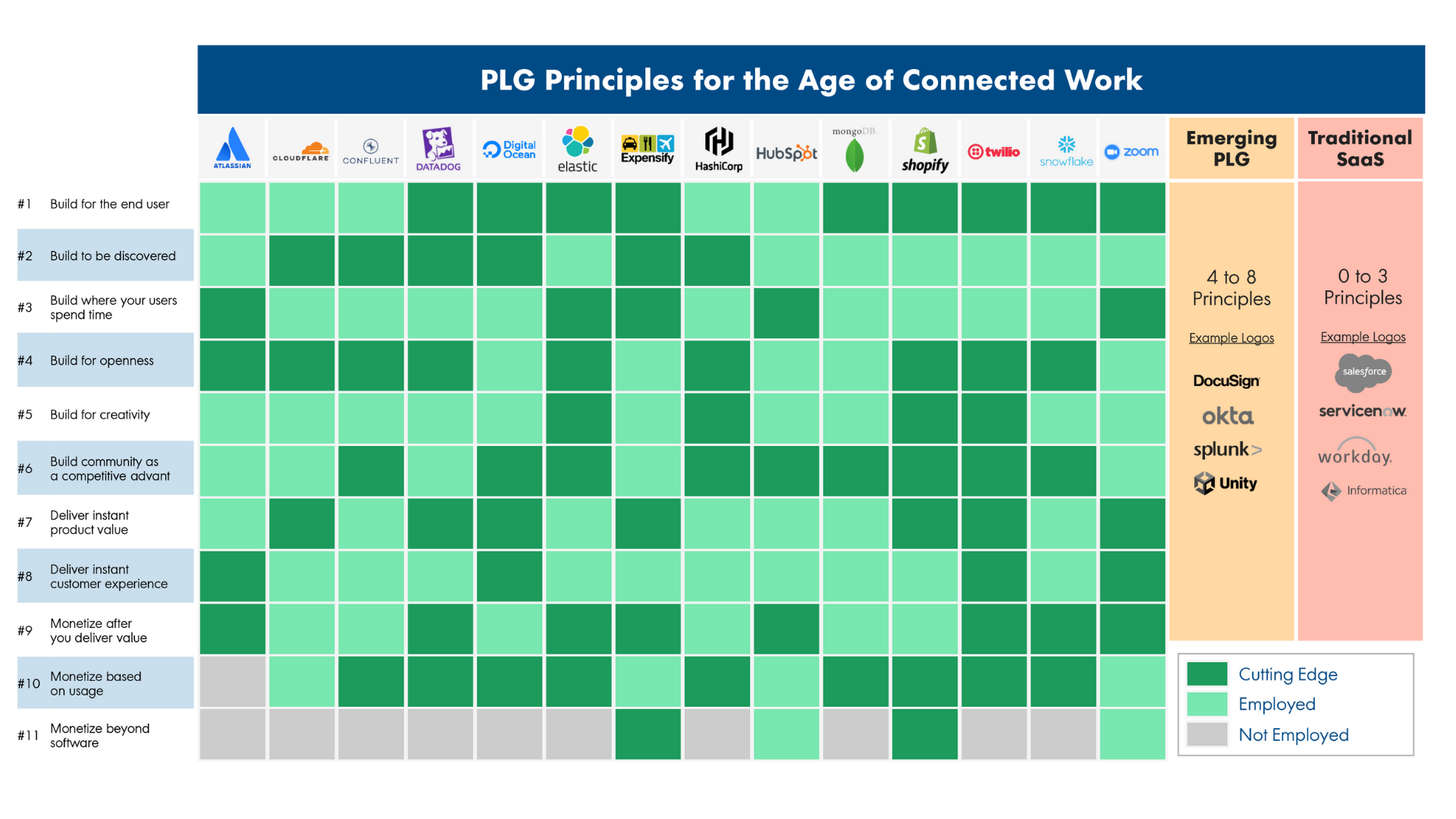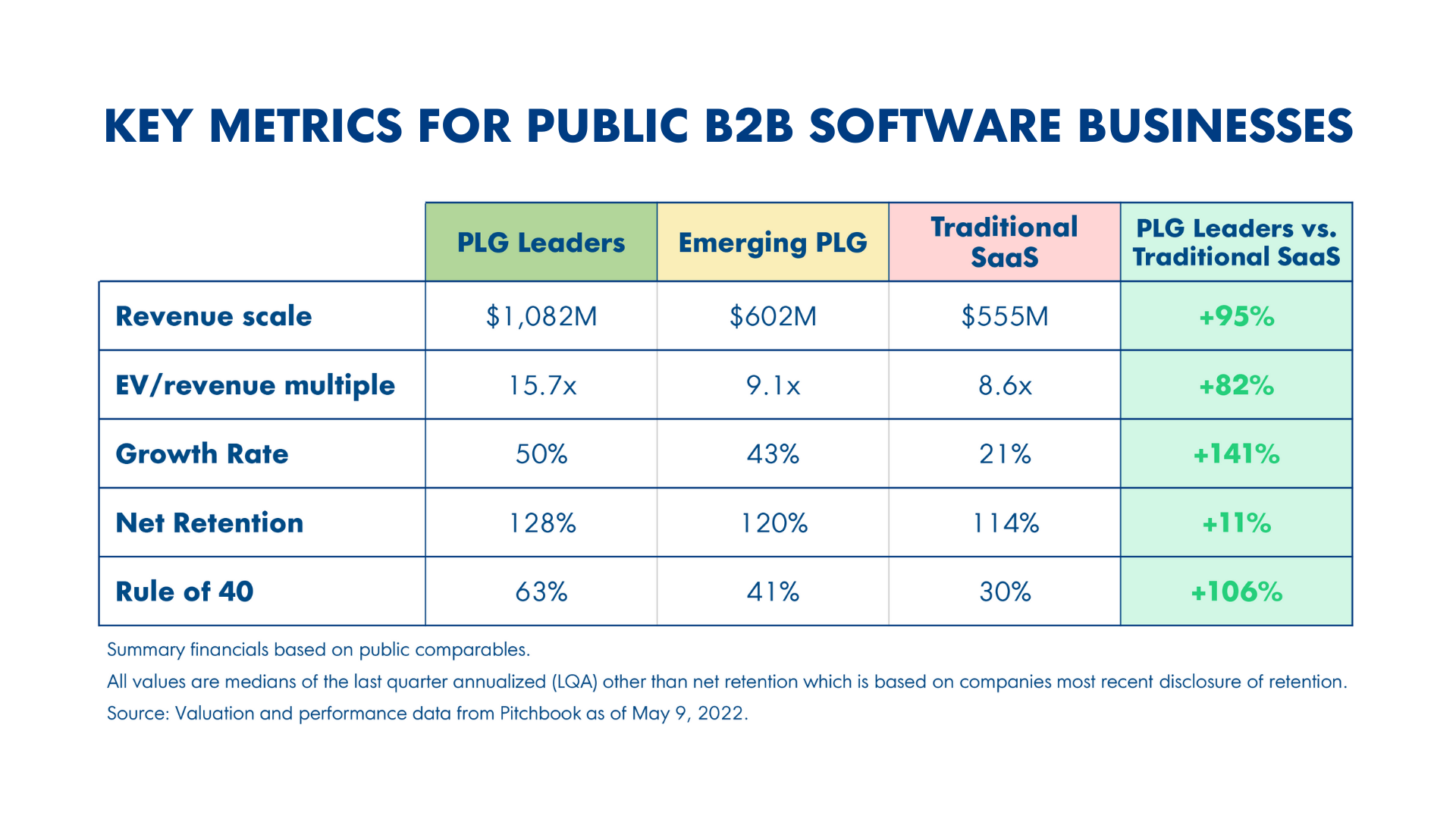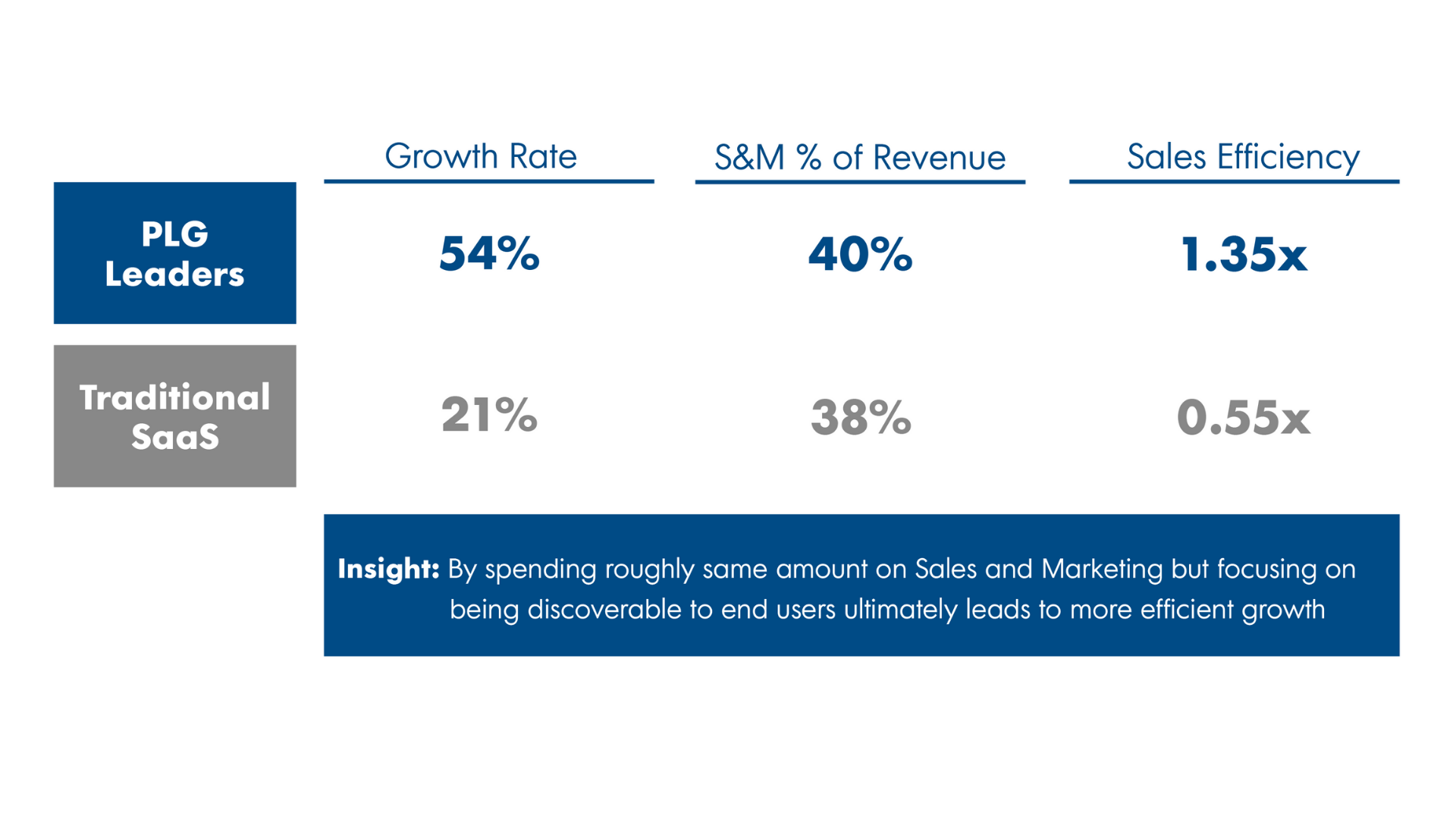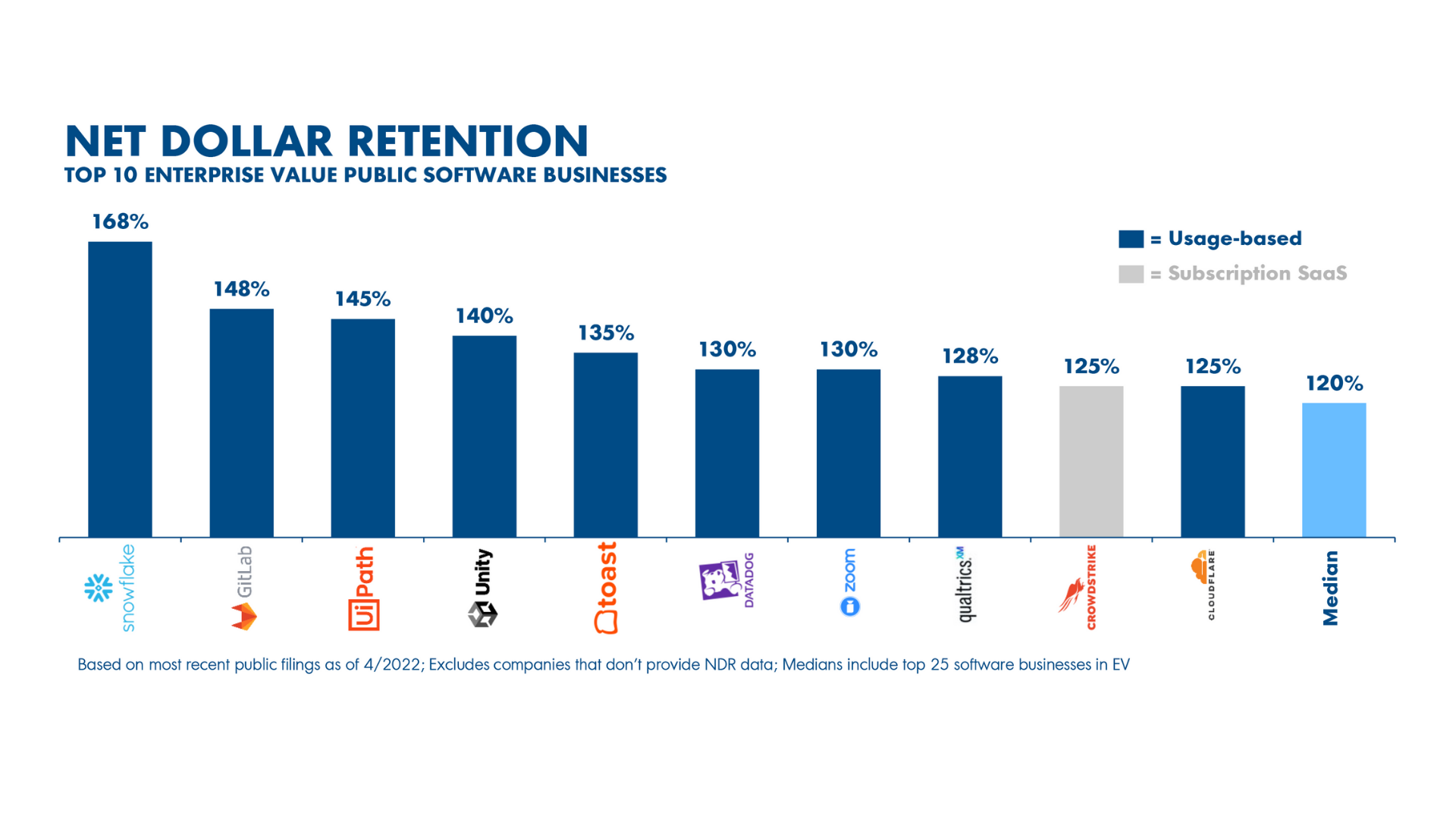Curtis Townshend
More posts from Curtis Townshend
Companies are valued based on metrics. Those with better metrics are valued higher, and those with worse metrics are valued lower.
None of this is controversial, but it’s also not helpful for getting started — metrics alone don’t help you build a business. They can help you set targets, but they do little to help you hit those targets.
What if startups reverse-engineered the whole thing and started by thinking about what successful companies are doing to drive their success. If startups begin by focusing on the tactics successful companies are using, can they tie those to the metrics they help elevate? And if builders follow enough of those tactics and improve enough of those metrics, can they then achieve the valuations of the leaders they want to emulate?
Since the term “product-led growth” (PLG) was first coined in 2016, the startup community has focused on answering these questions. PLG is defined as a growth model where product usage drives customer acquisition, retention and expansion, and it has always been focused on developing for the end user. But as end users have seen their lives and how they work change over the last three years, the tactics companies employ to enable PLG are changing.
Here are 11 principles that can guide readers to find success, even in unstable markets:

Those on the cutting edge, “PLG leaders,” are those using more than nine of these product-led principles, and those that follow very few (or none) of them are labeled “Traditional SaaS.”

Across the board, the variance in metrics is stark. PLG Leaders have achieved 95% more revenue scale while still growing 141% faster than their peers, retaining 11% more of their revenue and staying more than twice as efficient when it comes to the Rule of 40.
It’s not shocking that all of this leads to 82% higher multiples, but what exactly are they doing?
Building to be discovered
Products today aren’t pitched, they’re discovered. They don’t enter a business from the briefcase of a sales rep to an executive who cries for adoption on an all-hands training session. They are found by ordinary folks who are seeking to solve everyday problems through Google, communities or friends — this is where the new user journey starts.
So if you want to be a product that’s consistently attracting new logos, you need to be discoverable.
Zapier does this by showing up when folks google solutions to problems they face every day. It bids to rank first for searches like, “How do I connect Google Docs and Miro?” and “Importing TypeForm to Google Sheets.”
Zapier’s co-founder, Wade Foster, built this into the company’s DNA. “When you’re building a company, the first thing you need to do is figure out where your customers are hanging out. It’s meeting them where they are at,” he said.
Public PLG leaders like Hashi (through their open source products like Terraform) and Digital Ocean (through their non-product focused tutorials) show off other ways to be discoverable when your target users are in need. When your target users have a problem to solve, make yourself easy to find.
But this is only half the battle.
Delivering instant value
Discoverability without value often just leads to frustrated users. For example, if Zapier brought you to a page to connect two disparate systems, but suggested that you delete everything and start over with its product, users would be just left frustrated.
The same is true with Digital Ocean’s help materials. If all it did was tell you about Digital Ocean’s products and not how to solve the problem you’re facing, there’s no value provided. Value must be quickly provided after your company is discovered.
This is only becoming more important as the divide between work and life continues to blur. Business software buyers expect their work software to provide value as quickly as consumer apps. The winners across several categories have started to recognize this and are being rewarded for their success.
Whether it’s in CRM software (HubSpot), content delivery (Cloudflare), project management (Asana), e-commerce (Shopify) or payments infrastructure (Stripe), being focused on getting customers to value in minutes instead of weeks or months can create a massive competitive advantage.
Keep in mind that all of this is relative to your competitive set. No one is going to fully implement a new CRM in a day, much less 15 minutes, but that doesn’t mean you can’t show users value instantly.
Building and delivering with PLG begets sales efficiency
Overall, the PLG leaders that build to be discovered and provide instant value are able to attract new users at a lower cost than their competitors.

If you find yourself spending too much on marketing relative to the growth you’re driving, you may need to focus more on finding your customers in their moment of need. If you’re seeing too many customers fall out of your funnel after finding your product, you may need to take time to understand the value you’re providing customers in the first 15 minutes of using your product.
Now, for getting paid.
Monetizing usage
Ultimately, software businesses need to get paid for what they provide, but when looking at the market leaders, it’s clear that the user seat model is close to its deathbed. Today’s software leaders have realized that restricting the number of seats behind a paywall only serves to restrict the number of use cases a customer can find.
The modern answer is usage-based pricing.
Monetizing usage does two incredible things:
It allows for a highly featured, low barrier to entry
Customers don’t start with a large upfront commitment before they know if a product is worth investing in. At the same time, they also aren’t left with a product that’s limited to one or two simple features and hides the real value of the product behind an additional cost hurdle.
It allows for natural expansion that connects customer value to revenue
While I wouldn’t recommend stealing from daytime lawyer TV ads, the usage-based model truly lets “We get paid when you get paid” ring true.
Finding the right value metric and connecting that to how you charge customers lets you explore new use cases and ensures that customers can easily connect the investment they’re making in your product to the returns they’re receiving.
This approach used to be limited to infrastructure players like AWS, but usage-based pioneers are popping up all over the stack. PLG leaders have adopted it for marketing (Klyavio, Attentive), legal (Logikull) and even environmental compliance (Encamp).
The rewards are clear, most notably in the form of net dollar retention:

Making the jump to usage-based pricing doesn’t happen overnight, but it starts with understanding the right value metric for customers and going from there.
Build, deliver and monetize to be a leader
Tooling is making it easier to start developing a software business, which is making success less and less attainable.
Here’s what we know: the BDR outbound sales motion, the managed implementation mechanism and the seat-based pricing model are quickly falling to the wayside. The math simply doesn’t support going to market that way anymore.
Public and private leaders are efficiently scaling to the top with discoverability, instant value and value focused monetization. Developing these tactics and monitoring the metrics they support can get you started on your way to the top.































Comment